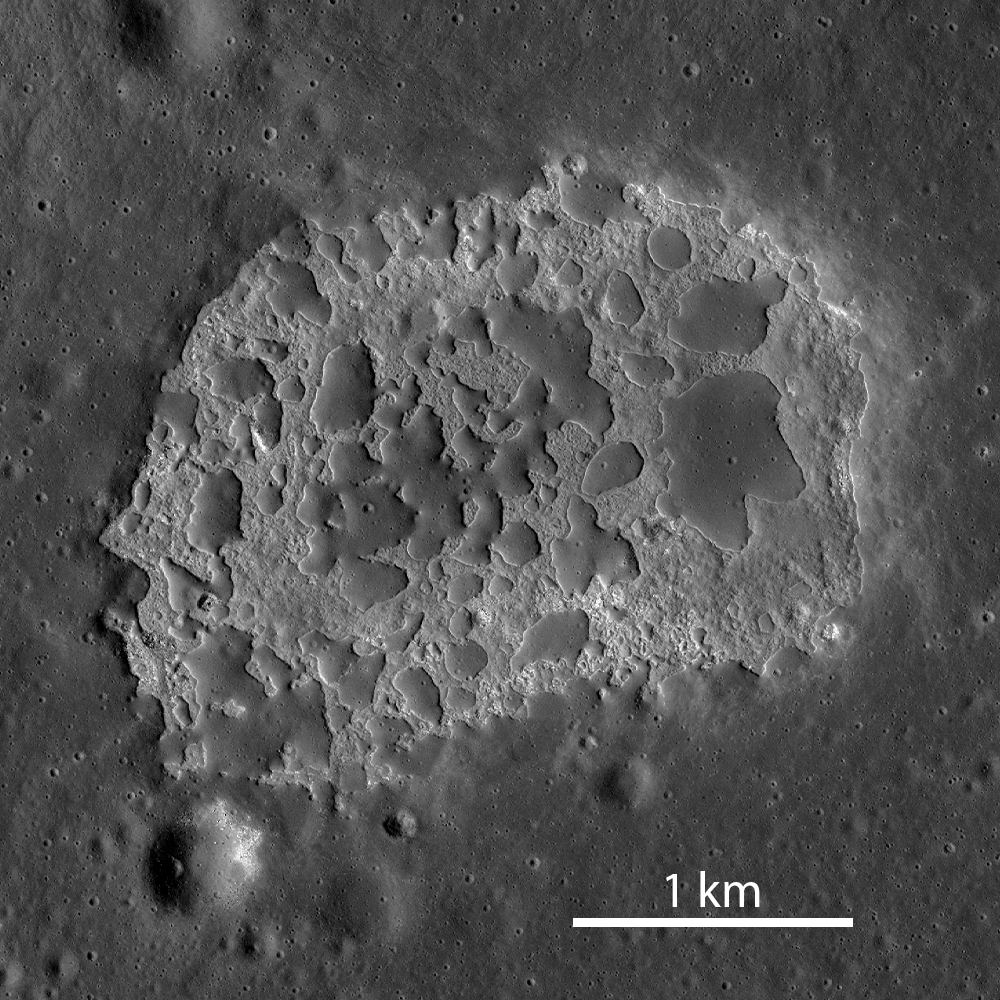Regions of the Moon known as irregular mare patches – formed by magma cooling from a volcanic eruption – have almost no big craters, indicating that they must be relatively young. By studying the distribution of craters within them, we can estimate when these regions were formed: no more than 100 million years ago.
The Moon isn’t very active nowadays, and to be honest hasn’t been very active for a pretty long time. By studying the craters on the surface – specifically, how many there are and how big they are – we can get a handle on the ages of various parts of the Lunar surface.
This is because volcanic activity will wipe away any craters, resurfacing the Moon. The longer the time since the last resurfacing event, the more craters we will see. They’ll also tend to be bigger, because it takes a long time to get hit by that unlucky strike from a massive asteroid or comet.
Almost all the Lunar surface is incredibly ancient, well over a billion years old. But regions on the near side of the Moon, known as irregular mare patches (or IMPs) tell a different story. These IMPS, usually no more than a dozen kilometers across, have no large craters.
This means that the IMPs are regions where volcanic activity took place relatively recently, as little as 100 million years ago. This makes IMPs among the youngest regions on the Lunar surface.
We currently don’t know what kept the Moon warm enough to trigger volcanic eruptions so recently. An alternative hypothesis suggests that the IMPs aren’t young at all, but merely made from a very low density form of magma. Perhaps a mission dedicated to studying IMPs might give us the answer.

